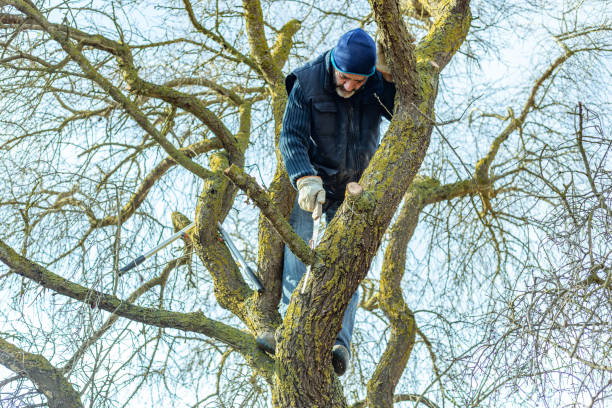When removing a stump from your property, there are two main options: grinding and removal. Both methods have advantages and disadvantages, making it important to evaluate which option best suits your needs carefully.
While stump grinding involves using a machine to shred the stump into small wood chips, stump removal involves physically uprooting the entire stump from the ground. In this discussion, we will explore the processes, pros and cons, and factors to consider when choosing between these two methods, leaving you with a clear understanding of the options available and the information necessary to make an informed decision.
Understanding Stump Grinding
Stump grinding is a highly effective method for removing tree stumps using a specialized machine to grind the stump into small wood chips. This process involves using a stump grinder, a heavy-duty machine equipped with a rotating cutting wheel or disk. The machine is maneuvered over the stump, and the cutting wheel is lowered onto it, gradually chipping away until it is reduced to small wood chips.
One of the main advantages of stump grinding is that it is a relatively quick and efficient method of stump removal. The grinding process can be completed in a matter of hours, depending on the size and hardness of the stump. Once the stump is ground down, the resulting wood chips can be used as mulch or disposed of as desired.
Stump grinding is also a more environmentally friendly option than other stump removal methods. Instead of completely removing the stump and its root system, which can cause damage to the surrounding landscape, stump grinding allows the stump to decay naturally over time. The wood chips left behind after grinding act as a natural barrier, preventing new growth and reducing the risk of regrowth.
Furthermore, stump grinding is a safer alternative to other methods, such as manual removal or chemical treatments. Using a specialized machine significantly reduces the risk of injury to individuals or property damage. Additionally, the grinding process eliminates the need for harmful chemicals, making it a safer option for the environment.
The Process of Stump Removal
Removing tree stumps involves a meticulous process requiring specialized techniques and equipment. Unlike stump grinding, which consists of grinding the stump into small chips, stump removal is a more comprehensive method that eliminates the stump from the ground.
The first step in the stump removal process is to assess the size and condition of the stump. This helps determine the appropriate removal technique and equipment to be used. Manual removal may be sufficient for smaller stumps, while more giant stumps may require heavy machinery such as a stump grinder or an excavator.
Once the equipment is prepared, the area around the stump must be cleared of any obstacles that may hinder the removal process. This includes removing rocks, debris, and any nearby plants or structures that could be damaged during the removal.
Next, the stump must be cut as close to the ground as possible. This can be done using a chainsaw or a specialized stump-cutting machine. The goal is to create a flat surface, allowing easier access to the stump.
After the stump has been cut, the removal process begins. This can be done by digging around the stump and using a combination of manual labor and machinery to uproot the stump from the ground. The root system’s depth and complexity will determine the difficulty level in removing the stump.
Pros and Cons of Stump Grinding
When considering the removal of tree stumps, it is important to weigh the advantages and disadvantages of stump grinding. Stump grinding is a popular method to remove tree stumps by grinding them into smaller wood chips. This process involves using a stump grinder, a heavy-duty machine equipped with a rotating cutting wheel.
One of the main advantages of stump grinding is its efficiency. The process is relatively quick, allowing for removing multiple stumps quickly. Additionally, stump grinding eliminates the need for extensive digging, which can be time-consuming and labor-intensive. This method also prevents the formation of large holes in the ground, making it a more aesthetically pleasing option.
Another benefit of stump grinding is that it eliminates the risk of regrowth. The roots are removed by grinding the stump below the ground level, preventing the tree from sprouting again. This is particularly important in areas where regrowth is undesirable, such as near buildings or landscaped gardens.
However, stump grinding does have its drawbacks. One disadvantage is that it may leave a large pile of wood chips. These wood chips can be repurposed as mulch or removed from the site, but this additional step may require extra time and effort.
Furthermore, stump grinding may only be suitable for some situations. It is not recommended for stumps located near underground utilities or structures, as the grinding process can damage these structures. In such cases, stump removal may be the preferred option.

